Provide captions for any prerecorded videos with sound.
How do I comply?
- Provide open captions (which cannot be turned off) or closed captions (which can be turned on or off) for all of your videos.
- Captions should be synchronised to the action that is happening in the video.
- Captions should include any words spoken, identify who is speaking and include any sound effects which are important for understanding.
Why?
Learners who benefit from captions include:
- People who are deaf or hard of hearing who read the captions instead of listening to the content.
- People who find it easier to read and listen to content at the same time, e.g. some people who have cognitive impairments or second language learners.
- People with temporary hearing impairments e.g. someone who has an ear infection which impacts their hearing.
- People affected by situational impairments e.g. someone who is watching a training video without headphones.
eLaHub examples
1. Provide captions for an externally hosted video
If you are embedding a video which is hosted on a hosting site (e.g. YouTube or Vimeo), make sure that the video has captions added. Hosting sites normally give you the option to upload a caption file with their video file. Some hosting sites will add automatically generated captions e.g. YouTube (as long as the audio quality is good enough and the English is easy to understand). If you do use automatically generated captions you must always check and edit them. You will always need to add punctuation and correct errors.
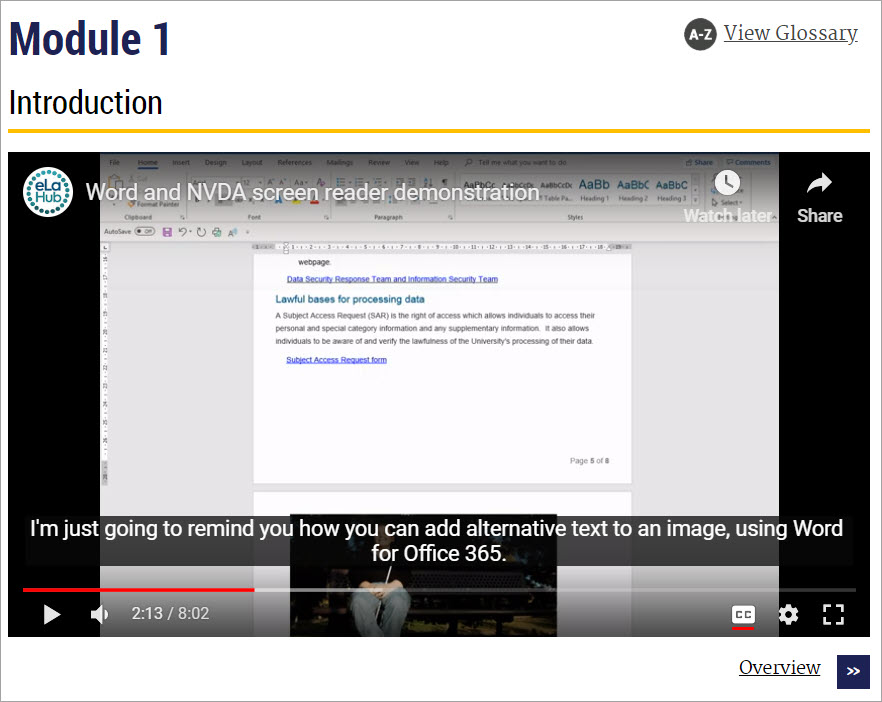
CourseArc
Captions added in YouTube
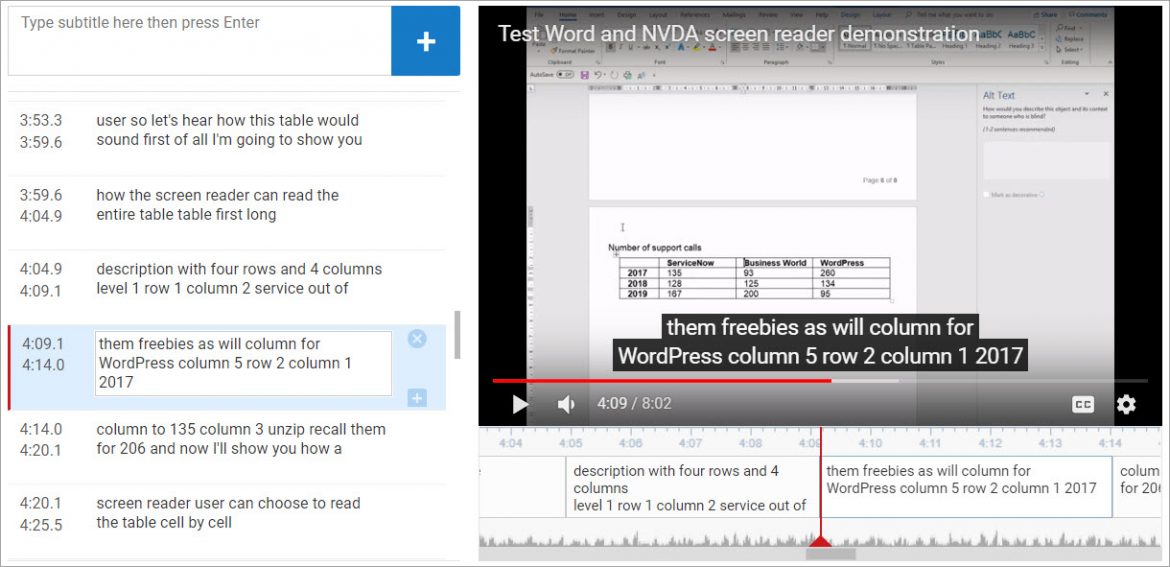
YouTube
Automatically generated captions with punctuation and word recognition errors
2. Provide captions for an embedded video
Some authoring tools allow you to add caption files e.g. Lectora.
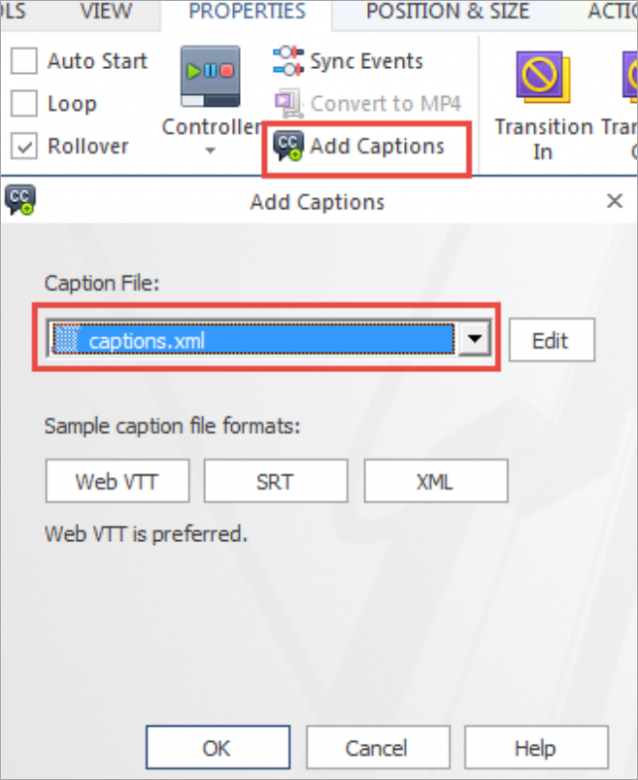
Lectora
Add caption file
Other tools allow you to add a caption file and also have a caption editing tool. This allows you to add and edit captions directly into your eLearning resource e.g. Storyline.
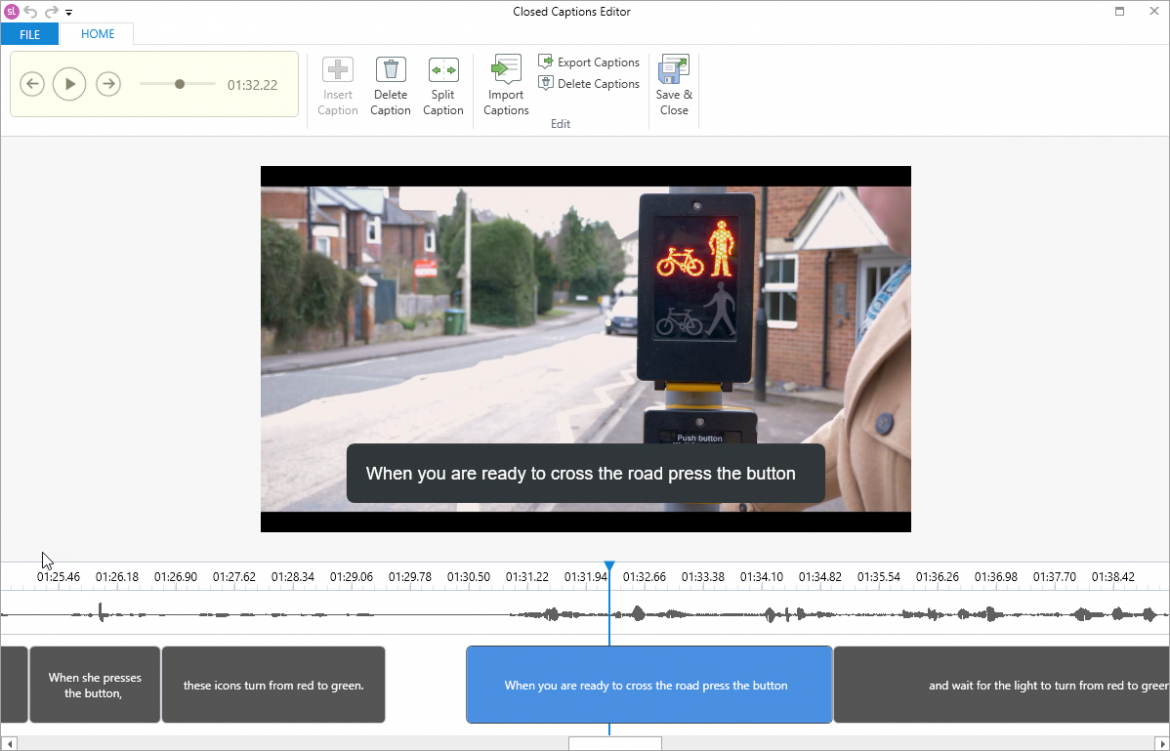
Storyline
Captioning tool
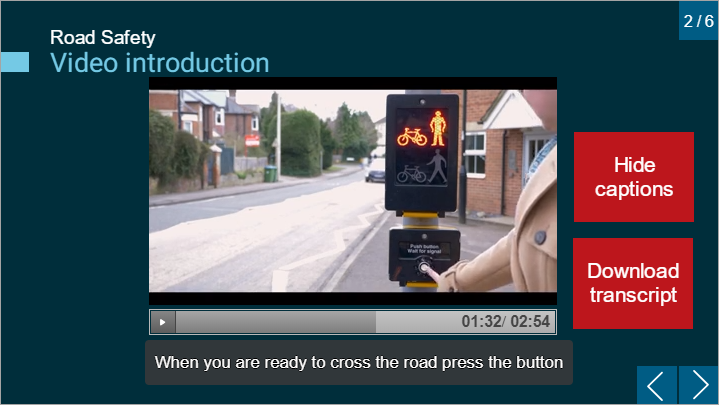
Storyline
Captions added with captioning tool
How can I test?
- Play all videos in your eLearning resource without sound and check you have an equivalent learning experience to a learner who is able to hear.
- Some tools, e.g. Lectora, have an accessibility checker if you select the Use Web Accessibility Settings option for your title. The accessibility checker will identify any multimedia objects in your title and ask you to verify that they have synchronised text equivalents.
Further information
Useful links
- 3Play Media: Ultimate guide to closed captioning
Comprehensive guide to everything you need to know about adding closed captions. - WebAIM: Guide to captions
Detailed guide with an explanation of different types of captions. - YouTube help centre: Instructions for providing closed captions
How to add and edit captions on YouTube videos.
WCAG information
| Category | Perceivable |
| Guideline | 1.2 Time based media Provide alternatives for time-based media |
| WCAG link | 1.2.2 Captions (Prerecorded) (Level A) |
| WCAG text | Captions are provided for all prerecorded audio content in synchronised media, except when the media is a media alternative for text and is clearly labeled as such. |
Copyright © [2020] World Wide Web Consortium, (MIT, ERCIM, Keio, Beihang)
Fully meet 1.2.2 Captions (Prerecorded)
We only give a summary of the Level A standards on our site. Find out how to fully meet this standard in our book Designing Accessible Learning Content.



Recent Comments